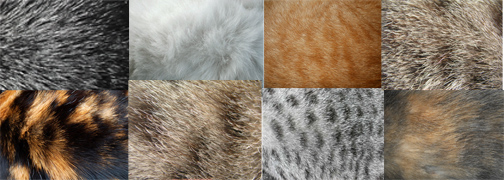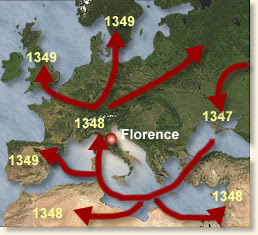Dogs have lived with
people for more than 11,000 years. They may have started to stay near humans
for food and warmth. Then people began to train dogs to work for them. They bred
certain types of dog for herding and guarding other domestic animals, then for
hunting and for companionship. Gradually, different types of dogs developed,
but it was not until the end of the 19th century that specific
breeds were classified. Today, there are about 200 dog breeds throughout the
world. They are more varied in their appearance and behavior than any other
domestic animal.
Domestic Dogs
All
breeds of domestic dogs from the Great Dane to the Chihuahua are descended from
the wolf and have inherited the wolf’s instincts. Like wolves, dogs are pack
animals. They treat humans as a part of their pack, and can be trained to accept
their owner as their pack leader, and to follow his or her commands.
Dog groups
The people
of ancient Egypt and western Asia were the first to breed distinct types of dog
for different purposes. By Roman times, dogs were kept for much the same
reasons as they are today. There are seven main groups- working, sporting, non-sporting, terriers, hounds, toys and herding.
 |
| Dog Groups |
Dog Features
The wolf is designed to
chase, capture, kill and eat its prey. It is agile, with strong legs for
running long distances. Domestic dogs retain many of the features of a wolf,
but through selective breeding now exist in any shapes, sizes and colors.
Coats:
There are three
main types of dog coats- long, short and wiry. Most breeds have an outer coat
of guard hairs and an undercoat of shorter hair. They moult, or shed their fur,
changing their coat in
spring and autumn.
 |
| Long hair |
 |
| Wiry hair |
 |
| Short hair |
Feet:
Dogs walk on
their toes rather than the soles of their feet. Their paw pads help with grip,
as do their claws, which are non-retractable unlike the cats.
Senses:
Dogs have
highly developed senses of hearing and smell. They use these in communication
and to track down their prey. The police use dogs to sniff out explosives,
criminals, and drugs. The dogs can see well in the dark and are good at seeing
movement in the distance.
Reproduction
A female
dog is pregnant for about nine weeks, and then gives birth to several puppies
known as a litter. At birth, puppies are blind and deaf. Their eyes open at
about 10 to 12 days and they are able to hear at 13 to 17 days old. Teeth start
to grow between three and five weeks of age.
At one week old, a
puppy spends most of its time sleeping and feeding by suckling from its mother.
At two weeks old, the
puppy takes its first wobbling steps and begins to explore. Its eyes are now
open and it can hear.
At three weeks old, the
puppy may start to eat solid food. At first, its mother will regurgitate meat
for it.
At six weeks old, the
puppy no longer feeds from its mother. It can soon be taken away from her to a
new home.


















